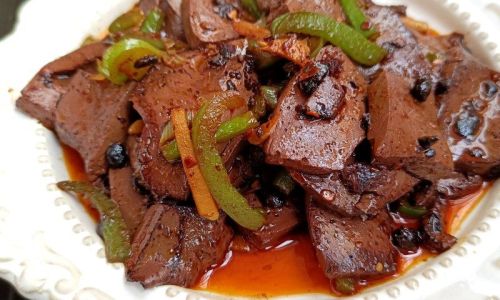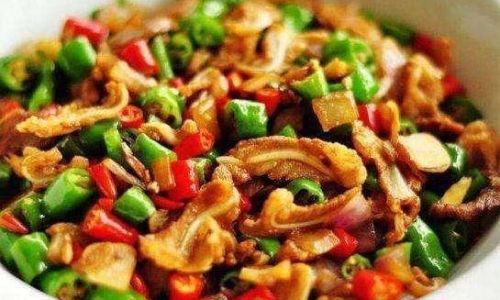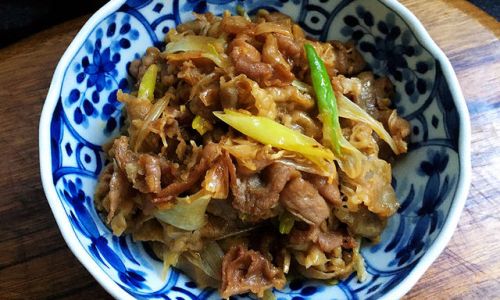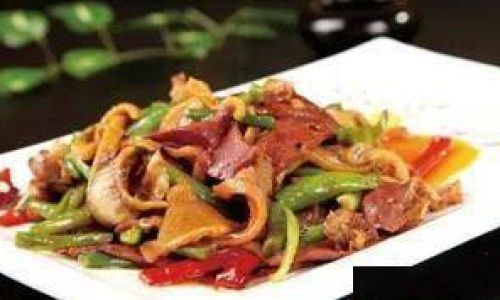Introduction
Fried pig’s blood, a dish that sparks curiosity and debate in equal measure, is a culinary tradition deeply rooted in various cultures across the globe. From the bustling streets of Southeast Asia to the rustic kitchens of Europe, this ingredient has been celebrated for its unique texture, rich flavor, and nutritional benefits. Despite its unconventional reputation, mastering the art of cooking fried pig’s blood opens a door to a world of gastronomic delight. This article will guide you through every step of the process, from selecting the finest ingredients to presenting a dish that tantalizes the taste buds and challenges culinary norms.
The Cultural Significance of Pig’s Blood in Cuisine
Before diving into the recipe, it’s essential to appreciate the historical and cultural context of pig’s blood. In many cultures, no part of the animal goes to waste—a philosophy rooted in sustainability and respect for the animal. In China, pig’s blood is transformed into xue doufu (blood tofu), a staple in hot pots and stir-fries. In the Philippines, dinuguan is a savory stew made with pork offal and pig’s blood, while in Europe, blood sausages like boudin noir (France) and morcilla (Spain) are beloved delicacies. Understanding this backdrop adds depth to the cooking process, turning a simple recipe into a cultural exploration.

Selecting the Right Pig’s Blood
The foundation of a great fried pig’s blood dish lies in the quality of the ingredient. Fresh pig’s blood is paramount, as it ensures a clean flavor and optimal texture. When purchasing, look for blood that is deep crimson in color, free from clumps or a metallic odor. If fresh blood is unavailable, pre-packaged options from reputable Asian or specialty markets can suffice. However, always check the expiration date and ensure the packaging is intact to avoid contamination.
Ingredients and Tools
To embark on this culinary journey, gather the following:
-
Primary Ingredients:
- 1 pound fresh pig’s blood, coagulated and cut into 1-inch cubes.
- 3 tablespoons cooking oil (peanut or vegetable oil works best).
- 4 garlic cloves, minced.
- 1-inch ginger, peeled and julienned.
- 1 medium onion, thinly sliced.
- 2-3 fresh red chilies, sliced (adjust to taste).
- 1 tablespoon fermented black beans, rinsed and mashed.
- 1/4 cup chicken broth (or water).
- 2 tablespoons soy sauce.
- 1 tablespoon oyster sauce.
- 1 teaspoon sugar.
- 1/2 teaspoon white pepper.
- 2 green onions, chopped (for garnish).
- 1/4 cup fresh cilantro leaves (optional).
-
Tools:
- Wok or large skillet.
- Chef’s knife and cutting board.
- Mixing bowls.
- Tongs or spatula.
- Slotted spoon.
Preparation: Cleaning and Cutting the Pig’s Blood
Fresh pig’s blood is often sold in a semi-solid state. To prepare it:
- Rinse Gently: Place the coagulated blood in a colander and rinse under cold water to remove any impurities. Avoid scrubbing, as this may break the cubes.
- Cut Uniformly: Using a sharp knife, slice the blood into 1-inch cubes. Uniformity ensures even cooking.
- Blanch (Optional): For a milder flavor, blanch the cubes in boiling water for 2-3 minutes, then drain and pat dry. This step is optional but recommended for those new to the ingredient.
The Cooking Process: Step-by-Step
Preparing the Aromatic Base
Heat the wok over medium-high heat until smoking. Add 2 tablespoons of oil, swirling to coat the surface. Toss in the minced garlic, ginger, and onions. Stir-fry for 1-2 minutes until fragrant and golden. The goal is to release the aromatic oils without burning the ingredients—a delicate balance that forms the dish’s flavor backbone.
Introducing the Heat
Add the sliced red chilies and fermented black beans. Continue stir-frying for another minute. The fermented beans add a salty, umami-rich depth, while the chilies provide a gentle heat that complements the blood’s earthiness.
Searing the Pig’s Blood
Increase the heat to high and add the remaining tablespoon of oil. Carefully place the pig’s blood cubes in the wok, arranging them in a single layer to ensure even searing. Allow them to cook undisturbed for 2-3 minutes until a golden crust forms. This step is crucial for texture, as it seals in moisture and prevents the cubes from disintegrating during cooking.
Deglazing and Simmering
Pour in the chicken broth (or water) to deglaze the wok, scraping up any browned bits from the bottom. Stir in the soy sauce, oyster sauce, sugar, and white pepper. Bring the mixture to a simmer, then reduce the heat to low. Cover and let it cook for 8-10 minutes, allowing the flavors to meld and the blood to absorb the seasonings.

Finishing Touches
Remove the lid and increase the heat to medium-high. Gently toss the cubes to coat them evenly in the sauce. Cook for an additional 3-5 minutes until the liquid reduces to a glossy glaze. The cubes should be firm yet tender, with a slight bounce when pressed.
Garnishing and Serving
Transfer the fried pig’s blood to a serving platter. Sprinkle with chopped green onions and cilantro leaves for a pop of color and freshness. Serve immediately with steamed rice, noodles, or crusty bread to soak up the flavorful sauce.
Variations and Customizations
One of the joys of cooking fried pig’s blood is its versatility. Experiment with regional twists:
- Spicy Sichuan Style: Add Sichuan peppercorns and doubanjiang (chili bean paste) for a numbing, fiery kick.
- Vietnamese-Inspired: Incorporate lemongrass, lime leaves, and fish sauce for a bright, aromatic profile.
- European Flair: Pair with caramelized onions, apples, and a splash of red wine for a rustic stew.
Health Benefits and Nutritional Profile
Beyond its culinary appeal, pig’s blood is a nutritional powerhouse. Rich in iron, protein, and vitamin B12, it has long been used to combat anemia and boost energy levels. However, moderation is key, as it is also high in cholesterol and sodium. Pairing it with fiber-rich vegetables and whole grains creates a balanced meal.
Common Pitfalls and How to Avoid Them
- Overcooking: Pig’s blood becomes rubbery if cooked too long. Monitor the texture and remove from heat once the cubes are firm but still tender.
- Insufficient Seasoning: The blood’s mild flavor requires bold seasonings. Don’t shy away from garlic, ginger, and soy sauce.
- Crowding the Pan: Overcrowding the wok leads to steaming instead of searing. Cook in batches if necessary.
Pairing Suggestions
- Beverages: A crisp lager, light red wine (like Pinot Noir), or jasmine tea complements the dish’s richness.
- Sides: Stir-fried greens (bok choy, spinach), pickled vegetables, or garlic-fried rice balance the meal.
The Psychology of Tasting Unconventional Foods
For many, the idea of eating pig’s blood evokes discomfort. Yet, culinary exploration often lies beyond comfort zones. Approach the dish with an open mind, focusing on the textures and flavors rather than preconceived notions. The earthy, mineral-like taste of the blood, when offset by aromatic spices and fresh herbs, offers a complexity rarely found in mainstream dishes.
Conclusion
Fried pig’s blood is more than a recipe—it’s a testament to culinary ingenuity and cultural heritage. By mastering its preparation, you gain not just a dish but a deeper understanding of global food traditions. Whether you’re a seasoned chef or a curious home cook, this recipe invites you to embrace the unconventional and savor the rewards of adventurous eating. So, heat your wok, gather your ingredients, and embark on a journey that promises to delight, challenge, and ultimately, nourish.






0 comments